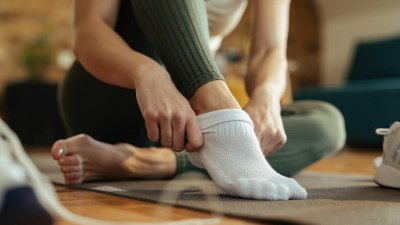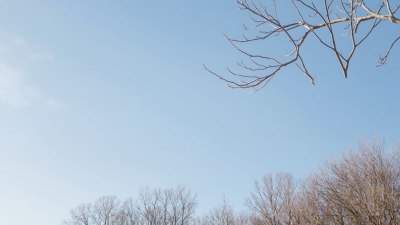The Science of Socks vs. Bare Feet and the Indoor Climate Crisis
Explore the impact of socks and bare feet on comfort and indoor climate in this detailed analysis.

Image by drazenzigic on Freepik
When discussing comfort and well-being in our indoor environments, the choice between wearing socks or going barefoot can significantly influence our experience. With the rise of awareness regarding the indoor climate crisis, understanding how our footwear choices intertwine with environmental factors has become increasingly important.
First, let's delve into the fundamental science of how our feet regulate temperature. The human body maintains a balanced temperature through various mechanisms, including the circulation of blood and the release of sweat. Our feet are particularly susceptible to feeling cold due to the high density of blood vessels in them. When we wear socks, they help to insulate and retain warmth, preventing the body's heat from escaping. In contrast, going barefoot allows for more direct contact with cold surfaces, which can lead to a drop in overall body temperature, particularly in colder months.
The Role of Socks in Indoor Climate
Socks, made from different materials such as cotton, wool, and synthetic fibers, serve more than just the protective function. They can also play a role in improving the indoor climate by influencing humidity levels and thermal comfort. For instance, wool is known for its moisture-wicking properties, absorbing sweat and allowing it to evaporate, thereby reducing humidity in the air. This property is beneficial during colder months when indoor heating systems can create a dry climate. Moreover, wearing socks can prevent skin conditions such as athlete's foot, which can thrive in damp, humid environments.
On the other hand, going barefoot has its advantages. Without the barrier of socks, your feet can engage directly with various surfaces, contributing to a natural grounding effect. Grounding, or earthing, refers to the practice of walking barefoot, allowing the body to connect with the Earth's electrons. This connection is thought to have several potential health benefits, including reducing inflammation and enhancing overall mood. However, it must be noted that in indoor settings, the advantages of being grounded need to be balanced with the potential risks of exposure to cold floors or sharp objects.
Impact on Thermoregulation
The choice between socks and bare feet significantly impacts our body's thermoregulation. Studies have shown that maintaining warm extremities, such as feet, can help in regulating overall body temperature effectively. This is particularly crucial in regions that experience extreme temperatures. In colder climates, wearing thick, insulated socks can prevent the onset of cold-related ailments such as frostbite. Conversely, in warmer indoor temperatures, going barefoot can prevent overheating and promote better circulation.
Additionally, the materials that socks are made from can influence the overall temperature regulation of the foot. For instance, cotton socks may feel comfortable in warm weather; however, they tend to retain moisture, leading to discomfort and potential fungal infections. Wool, in contrast, is an excellent insulator and can keep feet warm even when wet, making it an ideal choice for colder climates.
Indoor Climate Considerations
The indoor climate crisis is increasingly becoming a significant concern in modern society. As we become more aware of our carbon footprint and the health of our indoor environments, the small choices we make—like whether to wear socks or go barefoot—become more relevant. Indoor air quality is crucial for maintaining overall health, but it can be affected by various factors, including footwear choices. Shoes can bring in dirt and allergens, whereas going barefoot or wearing socks can help maintain cleanliness and improve air quality.
Moreover, the thermal performance of our homes impacts our comfort levels. In energy-efficient homes, maintaining a consistent temperature is vital. Wearing appropriate socks can contribute to this effort. The insulation properties of socks can help keep the feet warm, reducing the need for excessive heating and lowering energy consumption. By making conscious choices regarding our footwear, we can indirectly contribute to sustainability efforts in our living spaces.
Foot Health and Comfort
Foot health is another critical aspect that relates to the socks versus bare feet debate. Many people face issues like plantar fasciitis, bunions, or other foot ailments that can be exacerbated by improper footwear. The type of socks worn can provide additional support, cushioning, and comfort that are essential for those with existing foot conditions. On the contrary, going barefoot can strengthen foot muscles and improve overall foot function, provided the surfaces walked upon are safe and conducive.
There is also an emerging trend towards barefoot shoes that mimic the natural feel of being barefoot while still providing some protection. These types of shoes may offer the perfect compromise for those torn between the benefits of socks and barefoot practices.
The Psychological Aspect
Beyond just the physiological effects, there are psychological implications tied to the decision of wearing socks or going barefoot indoors. For some, going barefoot brings a sense of freedom and connection to nature, while for others, wearing socks can provide a sense of security and warmth. This psychological comfort can significantly impact our overall well-being, especially in stressful times.
Moreover, the choice of socks can reflect personal style and contribute to one's overall comfort, offering a layer of self-expression even within the confines of our homes. Pajama socks versus flashy patterned ones can set a different mood and contribute to relaxation after a long day, underscoring the subtle yet impactful role socks can play in our lives.
Environmental Footprint of Socks
Therefore, while considering the indoor climate crisis, it is essential to examine the environmental impact of socks. The textile industry, particularly synthetic fiber production, is a significant contributor to environmental degradation. Cotton farming consumes substantial water and pesticides, while polyester production involves fossil fuels. As consumers grow more conscious about sustainability, opting for eco-friendly socks made from organic materials or recycled fibers can mitigate some of these impacts.
There are also alternatives like bamboo socks, which are biodegradable and have a smaller ecological footprint than conventional cotton or synthetic options. By making informed choices about the materials of socks we purchase, we can contribute to a more sustainable future and reduce our overall impact on the environment.
Final Thoughts
In conclusion, the debate between socks or bare feet encompasses various elements such as comfort, health, indoor climate, and environmental impact. Each choice carries its significance and potential advantages. Socks offer warmth and support while contributing to indoor air quality, whereas going barefoot connects us more to our surroundings and can enhance our foot strength. Ultimately, understanding the science behind these choices can empower us to make informed decisions that promote our well-being and the health of our indoor environments.
There's no one-size-fits-all answer, as individual circumstances, preferences, and environments will vary. As we navigate the complexities of our indoor climates, paying attention to the simple choice between socks and bare feet might have ripple effects on our well-being and the sustainability of our living spaces. Moving forward, it becomes imperative to foster awareness around these choices, integrating small lifestyle changes to contribute positively to our health and the planet.











